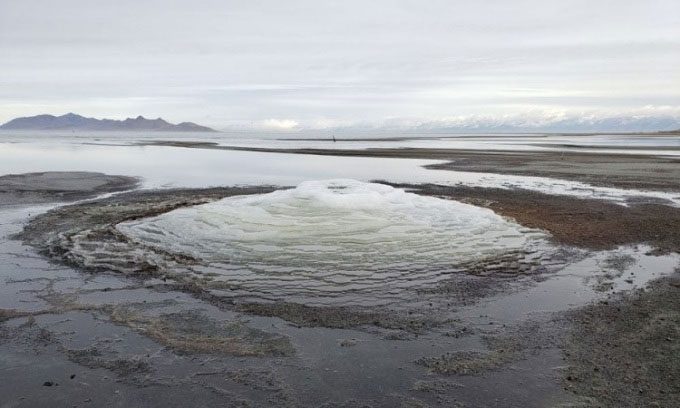White mounds have begun to appear at the Great Salt Lake in Utah, growing larger in size and increasing in number.
The Utah Geological Survey (UGS) investigated these mysterious structures and concluded that they are a type of salt known as mirabilite, Newsweek reported on September 8. Mirabilite, also referred to as Glauber’s salt, has the chemical formula Na2SO4•10H2O, while the formula for regular salt is NaCl.

A salt mound at the Great Salt Lake. (Photo: Live Science)
“In 2019, the first year we observed the structures, there were only about 4 mounds,” said Angelic Anderson, a park manager at the Great Salt Lake. “But this year, we have recorded 15 mounds, the largest number ever seen. They are also growing larger, with some mounds even reaching a height of one meter.”
The Great Salt Lake is located in the outskirts of Salt Lake City, Utah, and is the largest saltwater lake in North America and the eighth largest in the world. According to the UGS, these white mounds form when sodium sulfate-rich mineral water (Na2SO4) from underground meets the cold winter air, causing mirabilite crystals to precipitate and accumulate into mounds.
Mirabilite typically only appears during the colder months, as it is most stable and precipitates below 0 degrees Celsius. Normally, this area of the lakebed is submerged, causing the salt to dissolve in the lake water. However, the Great Salt Lake is gradually drying up.
According to the U.S. Drought Monitor, almost the entire perimeter of the Great Salt Lake is classified as “extremely dry,” with the far eastern area rated as “severely dry.” The lake’s water level has been continuously declining in recent years. On September 7, the water level was at 1,276 meters above sea level, the lowest level recorded since 1847. The previous record was noted in October 2021, at 1,277 meters above sea level.
The salt mounds began to form when the water level dropped below 1,278 meters above sea level. The UGS hypothesizes that there are many salt mounds because as mirabilite mounds grow, they seal off the mineral water source, causing groundwater to rise to the surface through new pathways.


















































